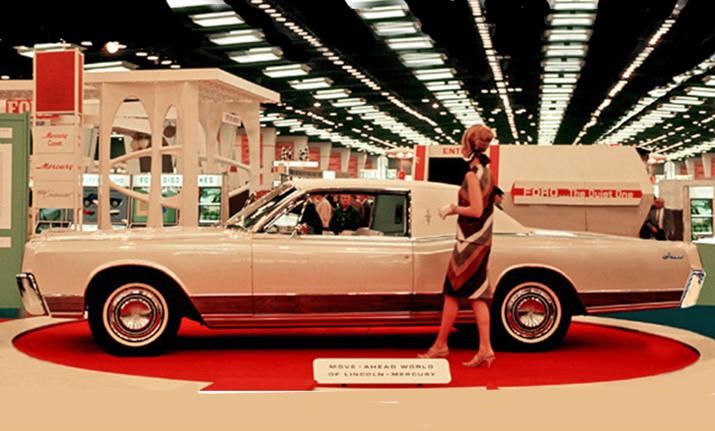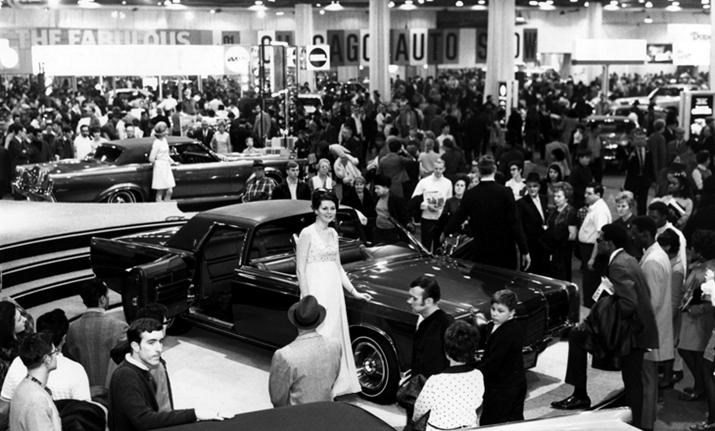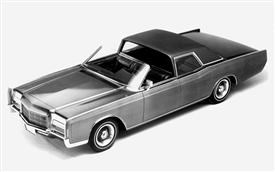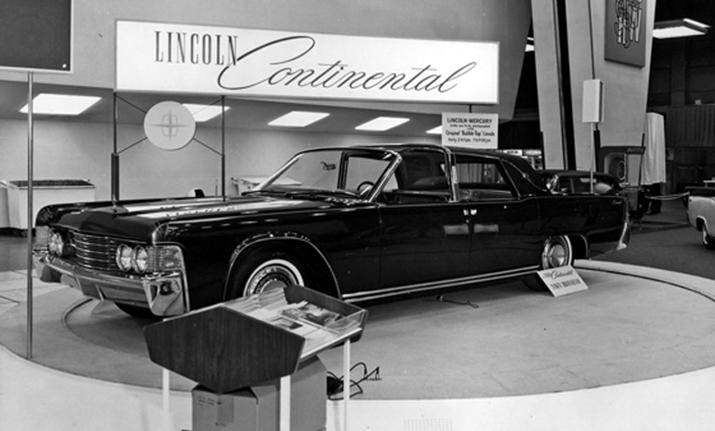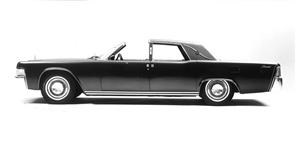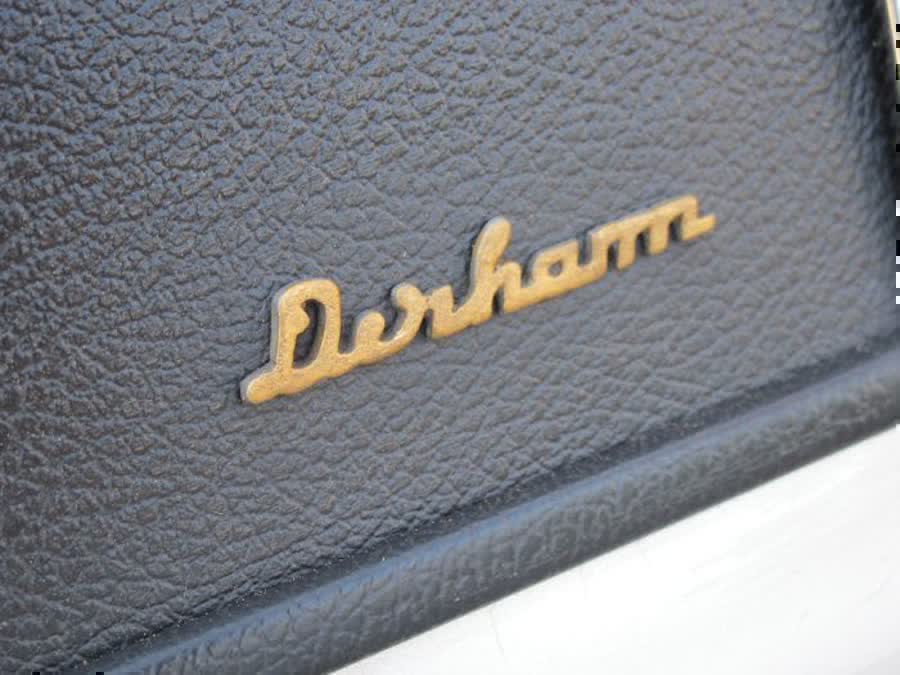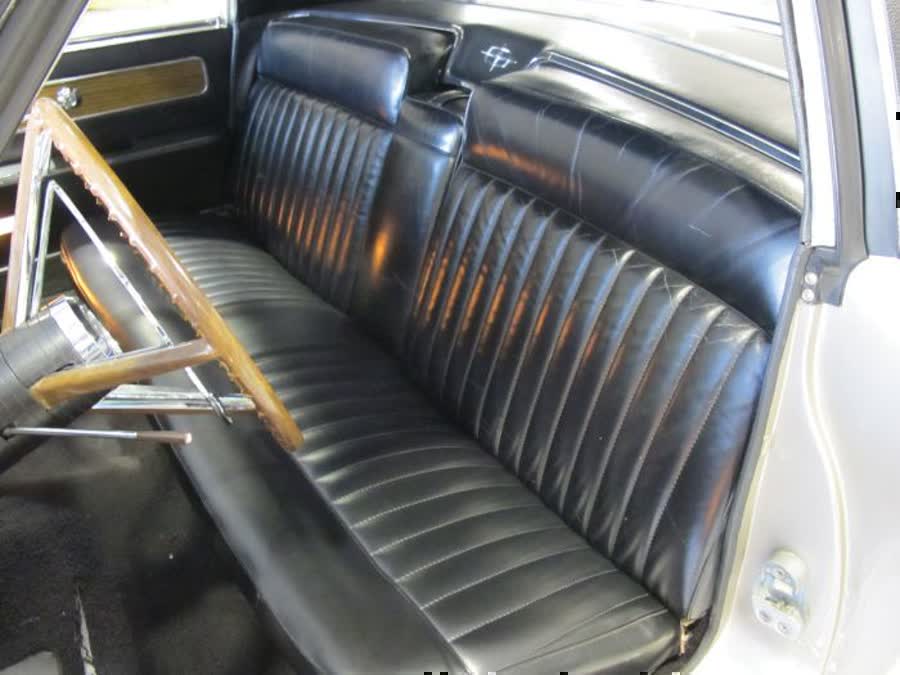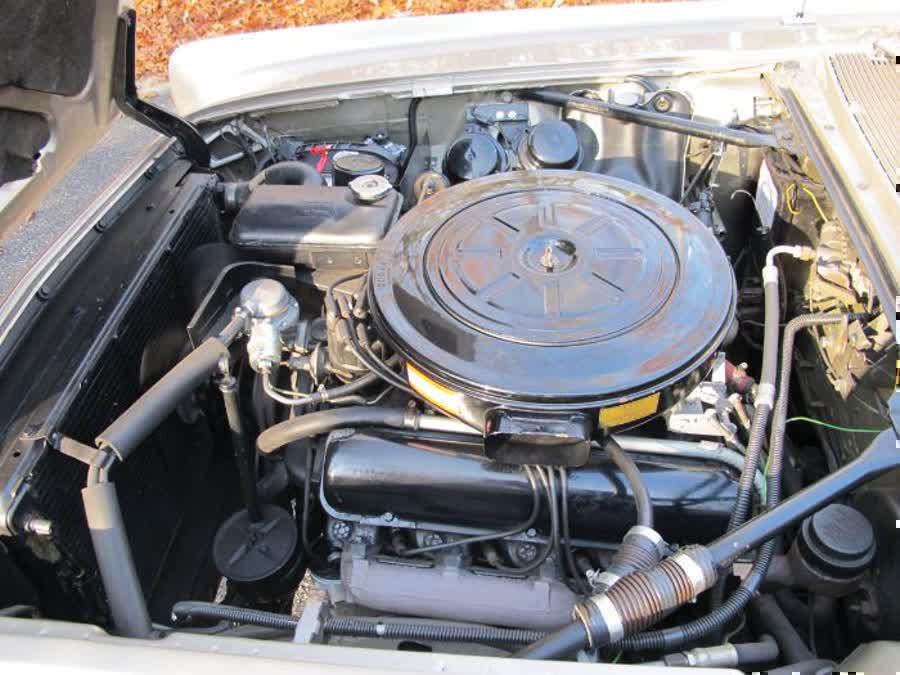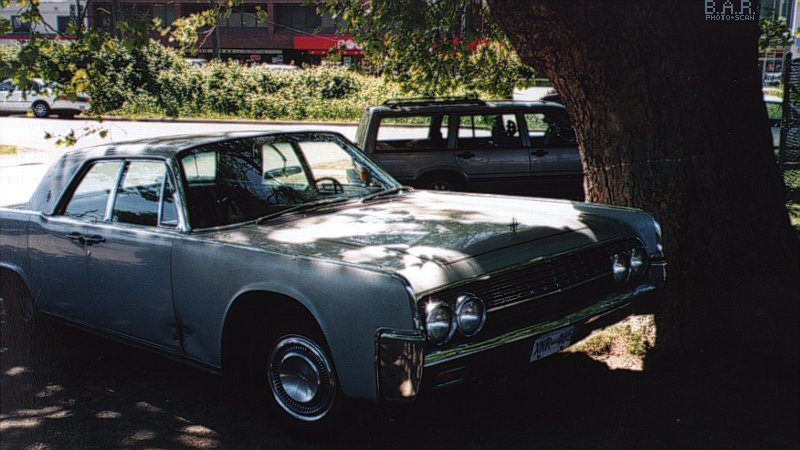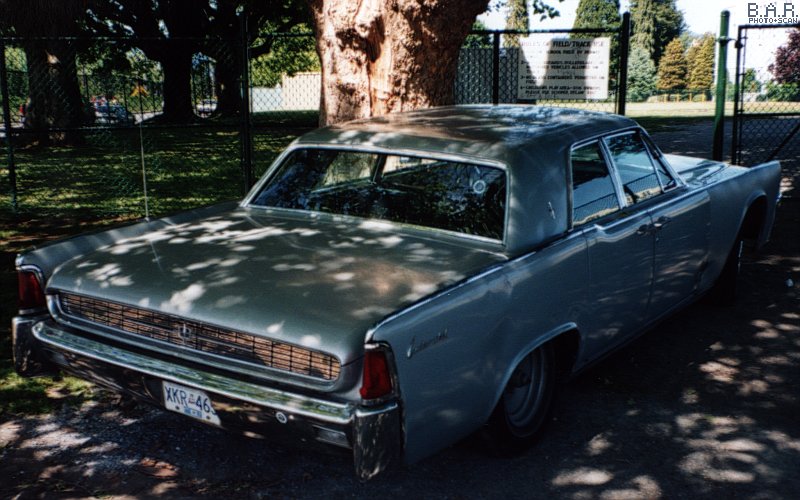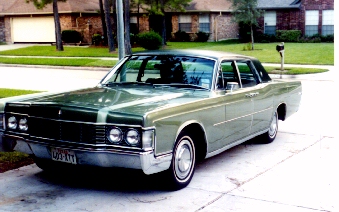The Lincoln Lido was a bodystyle of the Lincoln EL-series of the Lincoln marque during the 1950 and 1951 model years. It was introduced on July 5, 1950 as somewhat of Lincoln's answer to the GM hardtops that debuted in 1949. List price for the 1950 model was $2721. It was similar to the Mercury Monterey and the up market Lincoln Cosmopolitan Capri, all were two door coupes. The 1950 to 1951 models featured a vinyl
or canvas-covered roof, fender skirts, bright roof drip rails and
rocker panel moldings, dual door mirrors, a gold-colored hood ornament
from the Cosmopolitan and a custom leather interior with special door
and side panels. An electric clock was standard.
Few were sold.
However it reappeared as a special show car in 1963 called the Lincoln Continental Lido.
The
1950-1951 Lincoln Lido and Capri were the result of a harsh reality:
Despite the great strides made with its new 1949 models, Ford Motor
Company still had a lot of catching up to do.
True, its cars now boasted contemporary flush-fender styling and fully modern chassis with independent front suspension and longitudinal semi-elliptic rear leaf springs. But years of engineering stagnation had left Dearborn with flathead engines, while rivals had begun to issue more efficient overhead-valve designs. Further, the firm lacked its own automatic transmission, now fast-becoming a sales necessity, especially in Lincoln's price class.
These
deficits would be duly corrected, but Ford lacked something else in
1949: a "hardtop-convertible." General Motors surprised the entire
industry that year with its airy new Buick Riviera, Cadillac Coupe de
Ville, and Oldsmobile Holiday.
Though sales started out modestly
enough -- just 9,499 -- one didn't have to be clairvoyant to see that
they could only go up. And they did with the 1950 arrival of
lower-priced Chevrolet and Pontiac models and a trio from Chrysler Corporation, which had considered hardtops back in 1946.
Ford,
still on the financial ropes in 1949, found itself unable to answer
GM's initiative right away. But since the first postwar Ford held the
key to Dearborn's future, it naturally got the firm's first hardtop,
rushed out for 1951 as the Custom Victoria V-8.
By that point,
Ford had pretty much finalized an all-new 1952 corporate lineup that
included Mercury and Lincoln hardtops, but there was neither money nor
time for them in 1949, or even 1950-1951.
Nevertheless, company
pride dictated some kind of quick response, so Ford did about the only
thing it could: give ordinary coupes hardtop styling flair. The result
was a quartet of 1950 limited editions: Ford Crestliner, Mercury
Monterey and Lincoln's Lido and Capri. The last are probably the most
collectible of the bunch, being not only the most expensive and
luxurious, but the rarest.
Like
Crestliner and Monterey, the hardtop 1950-1951 Lincoln Lido and Capri
were mechanically identical with their linemates, but easily
distinguished by contrasting leather-look vinyl roof coverings.
Both
the Lincoln Lido and Capri sparkled a little more than other Lincolns,
with bright drip rails, rocker moldings, and twin door mirrors, plus a
gold-color Cosmopolitan hood ornament on Lido and chrome wheelarch
"eyebrows" front and rear on Capri. Interiors took on a more opulent
look, too, with unique door panels and premium upholstery of leather and
cord cloth.
Size was the principal difference. Lido, the "junior" Lincoln coupe, shared its body with Mercury,
but on a wheelbase three inches longer ahead of the cowl. The Lincoln
Capri bowed as an upmarket version of the senior Cosmopolitan coupe.
Prices reflected this. At $2,721, the Lincoln Lido cost $192 more than
the standard coupe, while the $3,350 Lincoln Capri stood $221 upstream
of the regular Cosmopolitan model. The 250-pound-lighter Lincoln Lido
was predictably faster and more agile than the Lincoln Capri, but not
much.
Dearborn also did about the only thing it could in lieu of its own automatic transmission:
use somebody else's. After an unsuccessful try at buying Ultramatic
from Packard, it secured GM's Hydra-Matic, which was the better choice.
Lincoln first offered it beginning in June 1949, and would continue to
do so through 1954.
With their smooth and reliable -- but less
efficient -- flathead V-8, the "bathtub" Lincoln Lido and Capri weren't
as fast as OHV Cadillacs,
Oldsmobile 88's, and hemi-powered Chryslers. Yet they could do a genuine
100 mph and exhibited granitic long-haul durability. As proof, Johnny
Mantz drove a standard sedan to 11th overall in the 1950 Mexican Road
Race, averaging 91 mph on some sections and actually leading the vaunted
Oldsmobile 88 of Herschel McGriff by 11½ minutes.
But this didn't
help the sales of the Lincoln Lido and Capri -- hampered by those stiff
prices and a very late introduction (July 5, 1950) -- nor Lincoln in
general, whose 1950 volume reached barely half the record 1949 total.
Nevertheless, the pseudo-hardtops returned for 1951 with the minor
styling and mechanical changes applied to all Lincolns. These included
longer, squared-up rear fenders for Lincoln Lido, no wheelarch
"eyebrows" for Lincoln Capri, and identifying name script for both. Not
surprisingly, demand remained very limited.
Just how limited is
hard to say, because Lincoln lumped Lido/Capri production in with that
of the standard coupes. It seems likely, though, that no more than 2,000
Lidos and 1,000 Capris left the factory each year -- not the rarest
cars in Detroit history, but rare enough to have made them collector's items long ago.
1950-1951 Lincoln Lido/Capri Specifications:
The
1950-1951 Lincoln Lido and Capri helped Ford re-establish Lincoln as
one of the most opulent lines on the market. Check out the 1950-1951
Lincoln Lido and Capri specifications below.
Specifications:
Engine: L-head V-8, 336.7 cid (3.50 × 4.38); 1950 152 bhp; 1951 154 bhp
Transmissions: 3-speed manual; overdrive and 4-speed GM Hydra-Matic optional
Suspension, front: upper and lower A-arms, coil springs
Suspension, rear: live axle, semi-elliptic leaf springs
Brakes: front/rear drums
Wheelbase (in.): 125
Weight (lbs): 4,100-4,385
Top speed (mph): 95-100
0-60 mph (sec): 15.0




